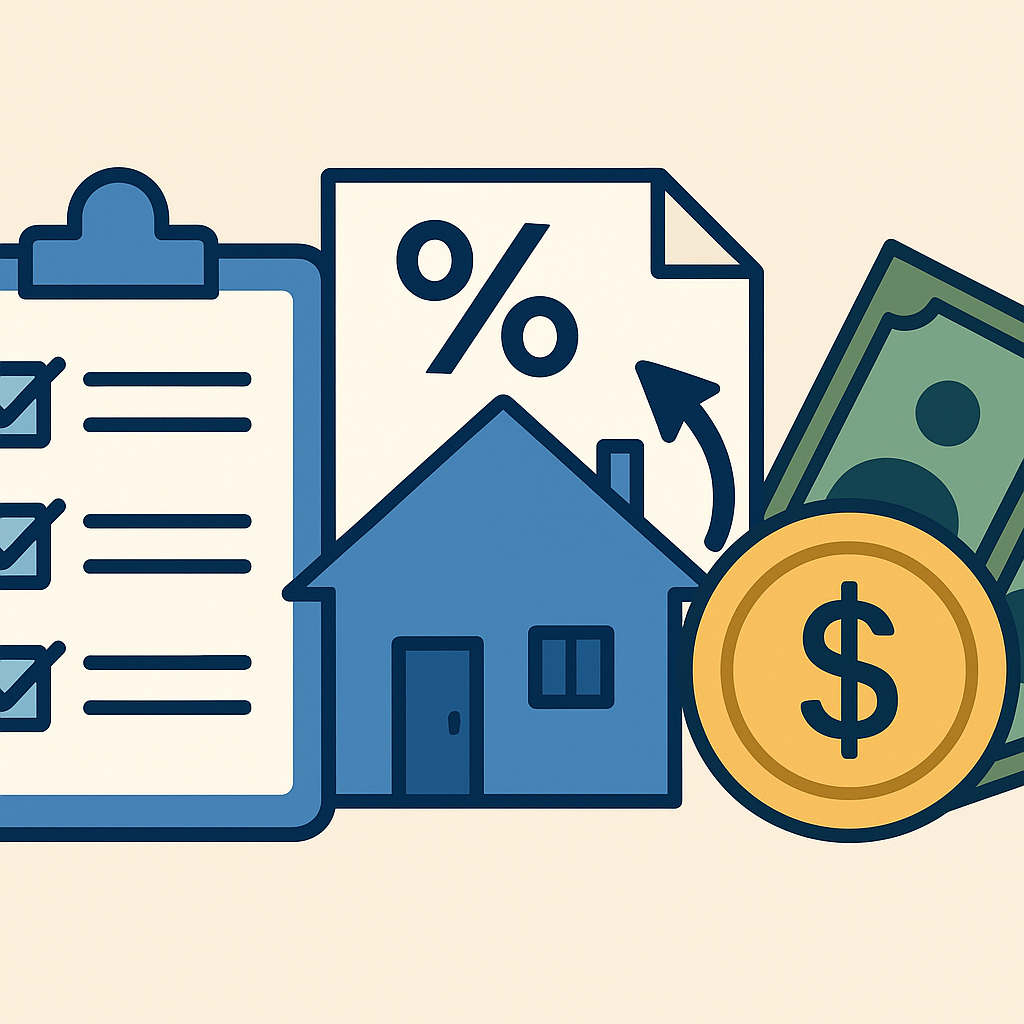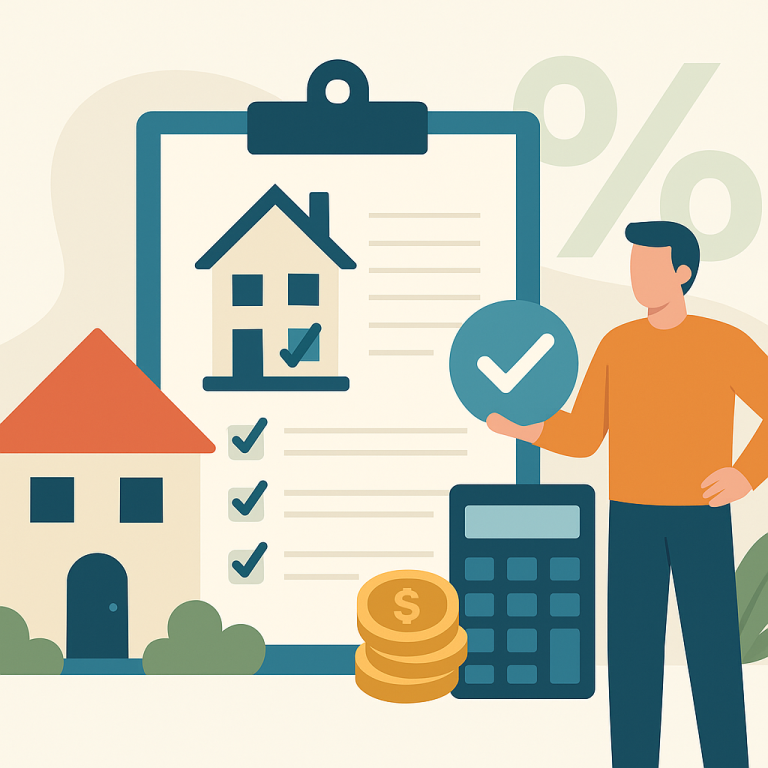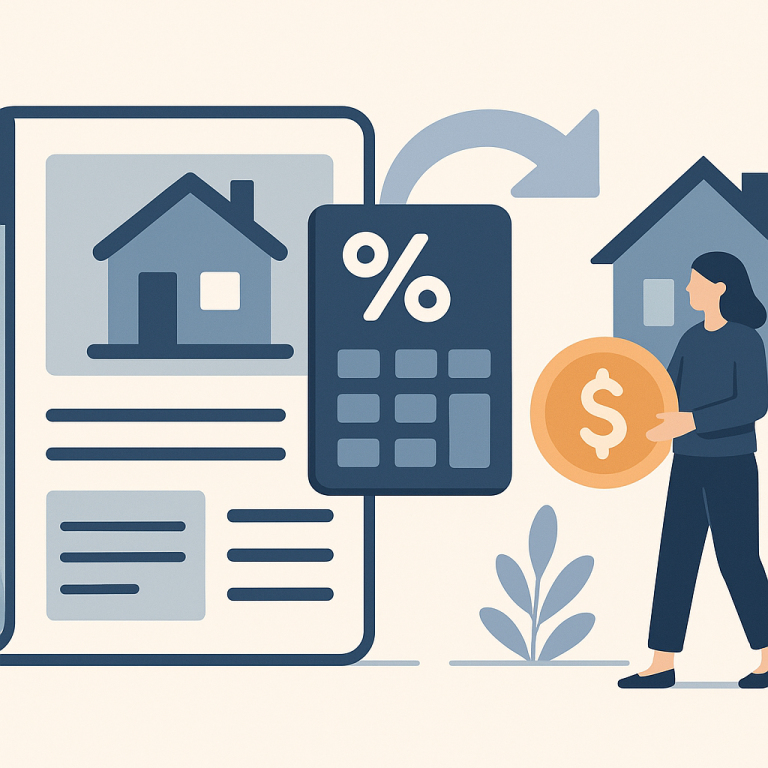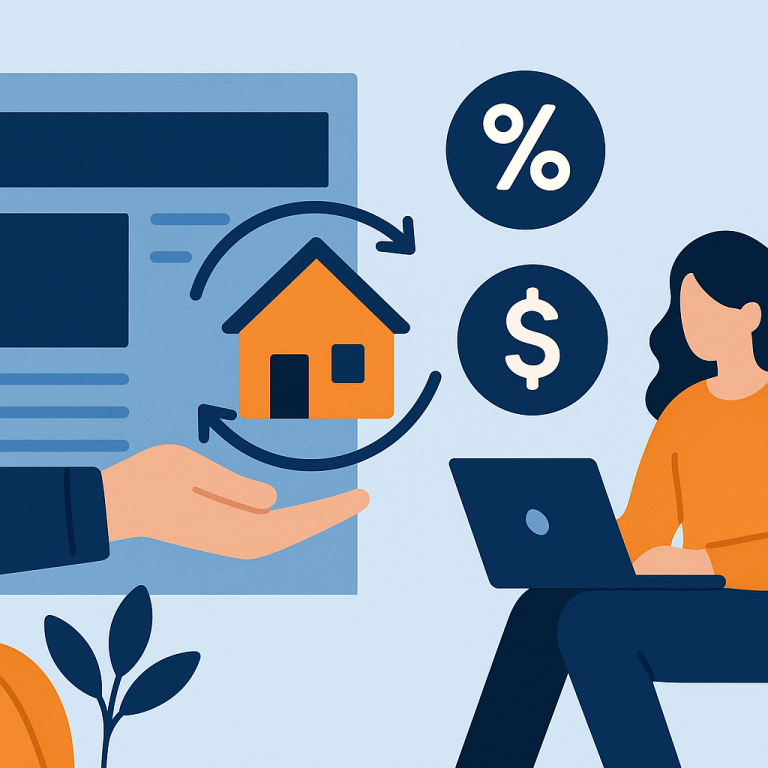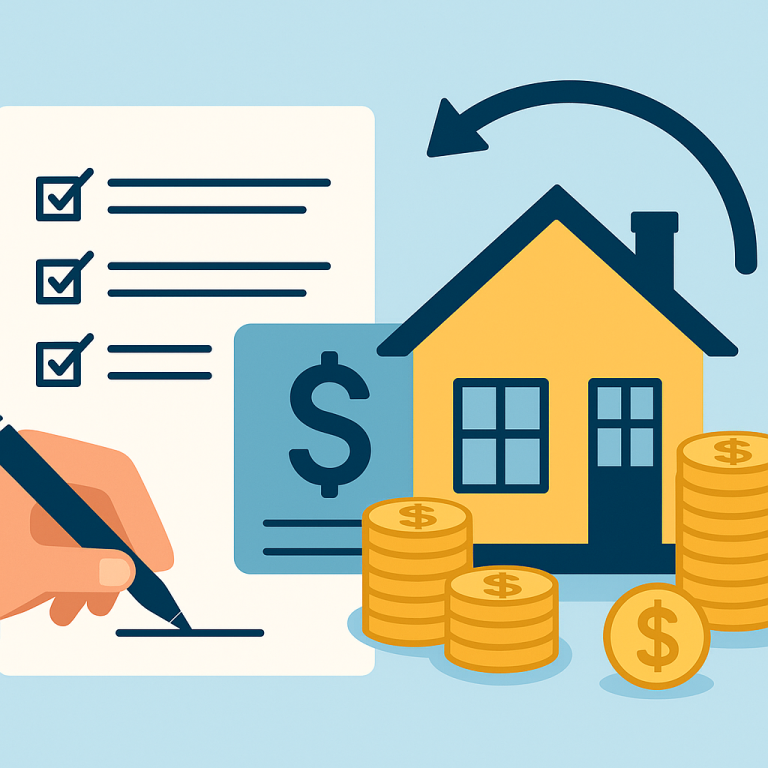Refinance guide refinance for borrowers with high DTI strategies
Refinancing When You Have a High DTI: What It Is and When It Makes Sense
Debt-to-income (DTI) is the percentage of your gross monthly income that goes toward monthly debt payments. Lenders use DTI to judge whether you can afford a mortgage. A high DTI (commonly above 43% for conventional loans, though some lenders allow higher with compensating factors) can block a refinance or push you into higher-cost loan programs.
Refinancing with a high DTI means pursuing a new mortgage while your debt obligations remain comparatively large. It makes sense when you can materially improve monthly cash flow or overall loan terms—examples include lowering your interest rate enough to reduce the monthly payment, converting variable-rate payments to fixed, extending the term to reduce payments, or using a cash-out refinance to consolidate high-payments (credit cards, personal loans) into a single mortgage payment.
Benefits and Drawbacks
Benefits
- Lower monthly payments: A lower rate or longer term can reduce the housing payment and lower your back-end DTI.
- Debt consolidation: Cash-out refinance can replace high-interest consumer debt with a lower-rate mortgage, potentially lowering total monthly obligations.
- Predictability and stability: Moving from adjustable to fixed-rate or eliminating balloon payments reduces financial risk.
- Access to lower-cost programs: Certain streamline or government refinance programs (VA IRRRL, FHA streamline in some cases) have relaxed underwriting that can help borrowers with higher DTIs.
Drawbacks
- Higher loan balance: Cash-out adds debt secured by your home and increases total interest paid over time.
- Closing costs and fees: Refinances carry upfront costs that can negate near-term savings if you don’t stay in the home long enough.
- Potentially higher interest rate or PMI: If equity is low or credit is imperfect, you may face higher rates or new mortgage insurance.
- Longer repayment extends interest exposure: Extending the term lowers payments but can increase lifetime interest.
Costs and Fees
Refinance expenses vary, but typical items include:
- Origination fees and lender points
- Appraisal and inspection fees (waived by some streamline programs)
- Title search and insurance
- Credit report charges and underwriting fees
- Attorney or closing agent fees
- Mortgage insurance premiums (if LTV exceeds 80% and for certain loan types)
Expect total closing costs often between 2% and 6% of the loan amount. Some lenders offer “no-closing-cost” refinance by rolling fees into the rate or loan balance—know the trade-offs clearly.
Step-by-Step Refinance Strategy for High-DTI Borrowers
-
Calculate your DTI and goals.
Confirm your front-end (housing) and back-end (total) DTI. Decide whether your primary goal is lowering monthly payment, paying down unsecured debt, shortening the term, or cashing out equity.
-
Review credit, income, and assets.
Pull your credit report, check scores, gather pay stubs, tax returns, and bank statements. Lenders will need these; improving credit and documenting additional income can help qualify.
-
Explore refinance options.
Compare conventional rate-and-term, cash-out, government streamline programs (VA IRRRL, FHA/USDA offers), and non-QM loans. Some programs reduce documentation and focus less on DTI.
-
Consider targeted tactics to lower DTI.
Options include paying down revolving balances, consolidating debts via cash-out, extending loan term, adding a qualified co-borrower, documenting additional income (bonuses, side gig), or securing a lender willing to accept compensating factors like reserves and high credit score.
-
Shop lenders and get pre-approved.
Obtain quotes from multiple lenders—include your local bank, credit union, and online lenders. Request full pre-approval to see how each lender calculates DTI and what they will accept.
-
Complete underwriting, appraisal, and closing.
Submit documentation, complete appraisal and title work, and review closing disclosure. Verify final numbers and closing costs before signing.
Common Pitfalls to Avoid
- Relying on refinancing promises without a clear math check: run a break-even analysis including closing costs and long-term interest.
- Using cash-out for nonessential spending: increasing secured debt for consumables can worsen financial stability.
- Assuming all lenders treat DTI the same: overlays and program rules vary—one lender may deny what another accepts.
- Ignoring property equity and mortgage insurance implications: low equity can increase costs or block cash-out options.
- Missing documentation nuances: student loans under income-driven plans often use a reduced payment for DTI; ensure the lender uses the correct payment calculation.
- Extending the term without considering total interest: lower payment today can cost much more over decades.
FAQ
Can I refinance if my DTI is over 50%?
Possibly. Some lenders offer loans above 50% DTI with strong compensating factors (high credit score, reserves, large equity) or through non-QM and certain government programs. Shopping multiple lenders and documenting income/reserves helps.
Will a cash-out refinance lower my DTI?
Yes, if you use cash-out to pay off high monthly consumer debts, your monthly debt payments may drop, improving your back-end DTI even though your mortgage balance grows. Evaluate costs, equity, and long-term interest before proceeding.
How quickly can I lower my DTI to qualify?
Quickest methods include paying down revolving balances and documenting additional income. Removing a large monthly debt (paid off or refinanced) can materially change DTI within a month or two, but lenders need proof of payoff.
Will refinancing hurt my credit?
Applying triggers a hard inquiry that can slightly lower your score temporarily. Paying down debts and successfully managing the new loan often improve credit over time. Avoid multiple hard pulls in a short window—rate-shopping within about 14–45 days is usually treated as one inquiry by scoring models.
Refinancing with a high DTI is doable with the right strategy: choose the appropriate program, document income and reserves, consider consolidating high-cost debts, and compare lenders carefully. Crunch the numbers and prioritize long-term affordability before signing.
META: refinance, high DTI strategies, mortgage refinance, cash-out refinance, debt consolidation, homeowner guide

